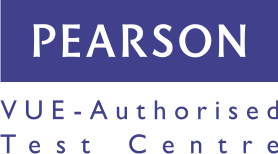Ten pięciodniowy kurs prowadzony przez instruktora jest przeznaczony dla programistów, którzy chcą tworzyć aplikacje klienckie przy użyciu SharePoint Framework. W ramach tego kursu studenci dowiedzą się o nowych narzędziach niezbędnych podczas tworzenia rozwiązań z użyciem SharePoint Framework. Ponadto omówione zostaną JavaScript i jego potencjalne pułapki, co prowadzi do korzystania z TypeScript jako typowanego nadzbiór JavaScript. Studenci zostaną również wprowadzeni do biblioteki JavaScript React, która jest często używana w komponentach SharePoint Framework. Korzystając z wszystkich tych wcześniej wspomnianych technik, studenci nauczą się, jak tworzyć klienckie komponenty webowe, rozszerzenia, dostosowacze pól itp. za pomocą SharePoint Framework. Wreszcie, studenci nauczą się, jak dołączać inne ramy JavaScript, dostarczać testy jednostkowe, konfigurować pakowanie i wdrażać swoje rozwiązania.
Ten moduł wyjaśnia opcje rozwoju dostępne w SharePoint. Przedstawia przegląd narzędzi SharePoint Framework oraz sposób, w jaki wpisuje się on w historię rozwoju SharePoint.
Ten moduł wyjaśnia, jak przygotować swoją maszynę do pracy z SharePoint Framework. Omawia konfigurację środowiska SharePoint do celów rozwoju i wdrażania.
Ten moduł wyjaśnia strukturę projektu Node.js, rolę różnych komponentów zawartych w nim oraz sposób tworzenia projektu od podstaw. Przedstawia różne rodzaje modułów i sposób pracy z nimi, tj. instalowanie, wersjonowanie, blokowanie, buforowanie...
Ten moduł wyjaśnia, jak używać generatora Yeoman do tworzenia projektu SharePoint Framework. Przedstawia strukturę projektu SharePoint Framework. Moduł ten wprowadza webowe części klienta oraz sposób dokonywania podstawowych zmian w nich. Przedstawia również lokalne i online środowisko robocze, gdzie można testować webowe części.
Ten moduł wyjaśnia pochodzenie języka JavaScript oraz wprowadza studenta do jego definicji.
Ten moduł wyjaśnia, jak pisać podstawowy JavaScript. Opisuje, jak tworzyć i używać zmiennych oraz dostępne w JavaScript typy. Ponadto wyjaśnia obiekty w JavaScript, w tym niektóre wbudowane obiekty, takie jak Date, Array, Math, itp. Moduł pokazuje, jak pisać funkcje i wyjaśnia zakresy, które tworzą. Wprowadzone są również prototypy. Obsługa błędów jest ostatnią częścią tego modułu.
Ten moduł wyjaśnia, jak używać niektórych najpopularniejszych wzorców w JavaScript.
Ten moduł wyjaśnia, w jaki sposób TypeScript rozwiązuje wiele problemów omawianych w poprzednich modułach. TypeScript dodaje adnotacje typów i kompilację kodu do twojego procesu deweloperskiego, dzięki czemu piszesz lepszy kod. TypeScript jest domyślnie używany we wszystkich wygenerowanych projektach SharePoint Framework. Moduł ten omówi język TypeScript oraz jak może pomóc w budowaniu aplikacji o skalowalnym charakterze przedsiębiorstwa.
Ten moduł wyjaśnia, jak modyfikować panel właściwości swojej części internetowej. Omawia, jak konfigurować i używać własnych właściwości oraz jak dynamicznie ładować opcje panelu właściwości, tworzyć niestandardowe elementy sterujące i walidować wartości właściwości.
Ten moduł wyjaśnia, jak ładować dodatkowe biblioteki w ramach projektu SharePoint Framework z różnych źródeł.
Ten moduł wyjaśnia, jak stosować stylowanie do swoich komponentów internetowych, pisząc utrzymywalny i prostszy CSS za pomocą Sass.
Ten moduł wyjaśnia, jak ładować dane w komponentach SharePoint Framework za pomocą klas narzędziowych. Omawia interfejs REST API SharePoint i sposób jego wykorzystania. Konsumuje własne API i obsługuje problemy związane z zasadami przekraczania pochodzenia.
Ten moduł wyjaśnia, jak budować projekt SharePoint Framework do wdrożenia. Omawia różne opcje wdrożenia, które masz do dyspozycji.
Ten moduł omówi podstawy frameworku JavaScript React. Omawia, jak działa system komponentów React oraz jak go używać w projektach SharePoint Framework.
Ten moduł wyjaśnia, jak używać i stosować style, komponenty, itp. z Office UI Fabric w projektach SharePoint Framework.
Ten moduł wyjaśnia, jak można używać swoich rozwiązań SharePoint Framework do dostarczania artefaktów SharePoint, takich jak pola, typy zawartości, listy, itp. do witryny SharePoint.
Ten moduł wyjaśnia, jak korzystać z Microsoft Graph w ramach rozwiązań SharePoint Framework.
Ten moduł wyjaśnia, jak budować rozszerzenia interfejsu użytkownika dla swojej witryny SharePoint za pomocą rozszerzeń. Omówi zmianę nagłówka/stopki witryny za pomocą dostosowywaczy aplikacji, tworzenie dostosowaczy pól do zmiany renderowania pola oraz sposób korzystania z zestawów poleceń do dostarczania własnych przycisków paska poleceń.
Ten moduł wyjaśnia, jak używać i konfigurować Webpack do pakowania wszystkiego wygenerowanego kodu.
Ten moduł wyjaśnia rolę i użycie uruchamiania zadań Gulp w ramach projektów SharePoint Framework. Omówi istniejące zadania, które zostały domyślnie dodane do twojego projektu, oraz sposób szybkiego dodawania nowych zadań.
Ten moduł wyjaśnia, jak używać dołączonych frameworków testowych w projekcie SharePoint Framework do testowania jednostkowego części internetowych i komponentów.
Ten kurs jest przeznaczony dla doświadczonych programistów, którzy chcą rozpocząć budowanie rozwiązań za pomocą SharePoint Framework. Nie jest wymagana wcześniejsza znajomość języków JavaScript ani TypeScript. Zaleca się jednak zaznajomienie się z platformą SharePoint.
Firma jest Autoryzowanym Ośrodkiem Szkoleniowym MICROSOFT Silver Learning
Możesz u nas podejść do egzaminu Pearson VUE
Spółka posiada wpis do ewidencji placówek niepublicznych Nr ew. ES.VIII.4320-6/p.n./2003 wydany z upoważnienia Prezydenta Miasta Łodzi
 |
 |
Zachęcamy firmy do uzyskania możliwości dofinansowania na szkolenia oferowane przez naszą firmę. W obecnej chwili istnieją dwa sposoby dzięki którym możesz uzyskać dofinansowanie.
Nasi pracownicy pomogą uzyskać dla Twojej firmy dofinansowanie. To naprawdę nie jest trudne. Jeżeli masz pytania napisz lub zadzwoń do nas.
Zapraszamy!
 |
Najbliższy termin: Prosimy o kontakt
Najbliższy termin: Prosimy o kontakt
Najbliższy termin: Prosimy o kontakt
Najbliższy termin: Prosimy o kontakt
Najbliższy termin: Prosimy o kontakt
Najbliższy termin: Prosimy o kontakt
Najbliższy termin: Prosimy o kontakt
Najbliższy termin: Prosimy o kontakt
Najbliższy termin: 15-12-2025 09:00
Najbliższy termin: 13-11-2025 09:00
Najbliższy termin: 09-12-2025 09:00
Najbliższy termin: Prosimy o kontakt
